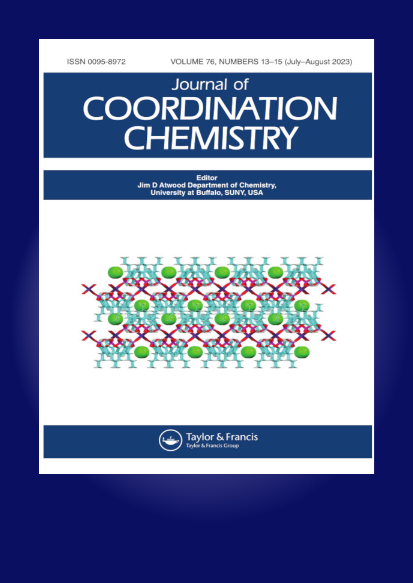4位吡啶环取代对4取代Py2N2吡啶烷大环Zn(II)配合物的影响
IF 2.1
4区 化学
Q3 CHEMISTRY, INORGANIC & NUCLEAR
Journal of Coordination Chemistry
Pub Date : 2025-01-01
Epub Date: 2025-02-03
DOI:10.1080/00958972.2025.2453062
引用次数: 0
摘要
大环小分子的金属结合特性是驱动这些配体应用的关键特性。吡啶修饰Py2N2吡啶烷小分子是一类新的大环小分子,其性质尚未被研究。因此,本文报道了六个吡啶修饰的Py2N2配合物库的Zn(II)金属结合。这些结果包括1H NMR、log βZn(II)和x射线衍射,这些结果与PyN3同系物进行了比较,表明每种支架的差异产生了显著不同的金属结合性能,可以在未来的应用中加以利用。本文章由计算机程序翻译,如有差异,请以英文原文为准。
Effect of 4-Position Pyridine Ring Substitution on Zn(II) Complexes of 4-substituted Py2N2 Pyridinophane Macrocycles.
The metal binding properties of macrocyclic small molecules is a key property that drives what applications for which these ligands can be used. Pyridine modified Py2N2 pyridinophane small molecules are a new class of macrocyclic small molecules, whose properties have not been explored. As a result, Zn(II) metal binding of a library of six pyridine modified Py2N2 complexes are reported here. These results include 1H NMR, log βZn(II), and X-ray diffraction, which are compared to PyN3 congeners to show that the differences in each scaffold yield markedly different metal binding properties that can be exploited in future applications.
求助全文
通过发布文献求助,成功后即可免费获取论文全文。
去求助
来源期刊

Journal of Coordination Chemistry
化学-无机化学与核化学
CiteScore
3.60
自引率
10.50%
发文量
171
审稿时长
3.2 months
期刊介绍:
The Journal of Coordination Chemistry publishes the results of original investigations of coordination complexes, loosely defined as the interactions of organic or inorganic ligands with metal centres. Original investigations may involve syntheses, structures, physical and chemical properties, kinetics and mechanisms of reactions, calculations and applications of coordination compounds. The applications may involve bioinorganic, organometallic, catalytic, solid state/materials, coordination chemistry of nanostructured surfaces and medicinal studies.
The Journal publishes original manuscripts, communications and reviews. Original manuscripts are expected to provide a clear contribution to the advance of coordination chemistry. Communications are short manuscripts with an urgency that requires rapid publication. Reviews are welcome in all areas of coordination chemistry and may focus on the metal, ligand or applications. Reviews of emerging areas of coordination chemistry should be developed fully from the basics, carefully relating the topic to the field in general. Reviews of well established subjects should collect developments from the literature and take a critical view of recent work.
 求助内容:
求助内容: 应助结果提醒方式:
应助结果提醒方式:


